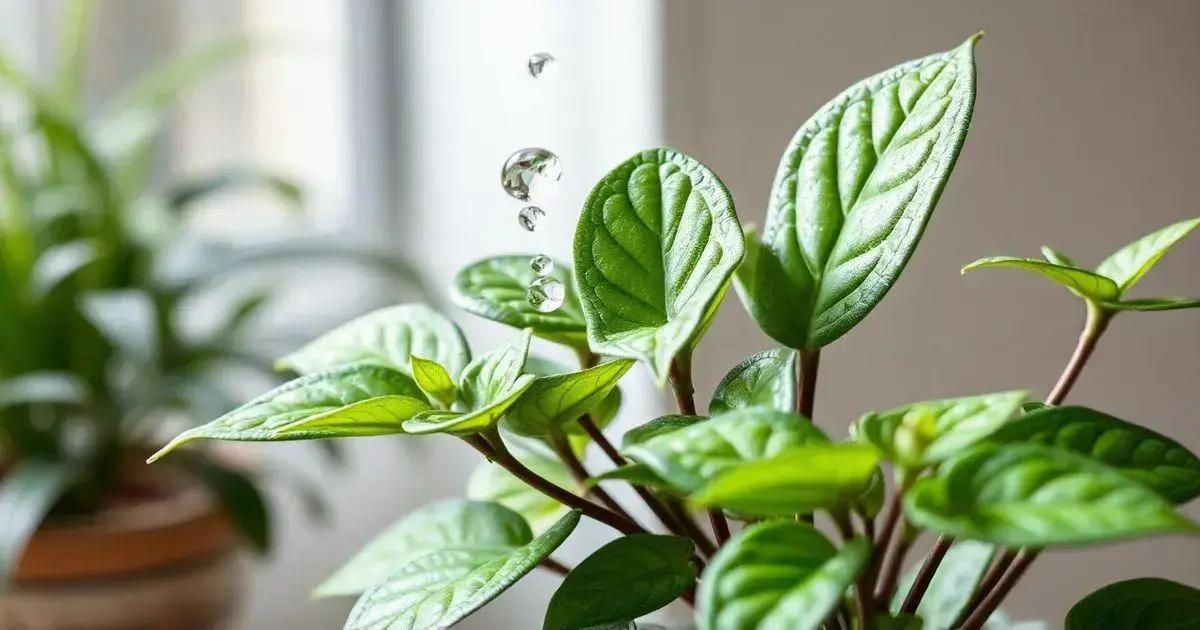How to Care for a Bird of Paradise Plant Indoors: 5 Essential Tips
How to care for a bird of paradise plant indoors may seem daunting, but with the right knowledge, anyone can successfully nurture this stunning houseplant. By understanding its unique needs, including optimal light, watering, and fertilization methods, you’ll watch this plant thrive in your home. Let’s dive into the specifics!
Table of Contents
ToggleOptimal light conditions for bird of paradise indoors
Optimal light conditions for bird of paradise indoors are essential for promoting healthy growth and vibrant blooms. To ensure your Strelitzia reginae thrives, it’s crucial to provide the right amount of natural light. Being native to tropical regions, this houseplant craves brightness, making light conditions one of the most critical factors in its care.
Understanding light requirements
Bird of paradise plants flourish best in bright, indirect sunlight. Direct sunlight can scorch the leaves, while insufficient light can hinder growth and flowering. Here are some tips to maintain optimal light conditions:
- Place near east or south-facing windows for maximum brightness.
- Avoid locations where light is blocked by heavy curtains or obstructions.
- Rotate the plant periodically to ensure even exposure to sunlight.
Natural versus artificial light
If natural light is limited, consider using grow lights to supplement your bird of paradise’s needs:
- Choose full-spectrum LED or fluorescent grow lights.
- Position lights approximately 12-24 inches above the plant.
- Keep lights on for 12-16 hours a day to mimic natural sunlight.
Signs of inadequate light
Be vigilant for signs that your bird of paradise is not getting sufficient light:
- Stunted growth or leggy stems stretching toward the light.
- Yellowing leaves, indicating weak photosynthesis.
- Failure to produce blooms, which typically occurs in well-lit settings.
Seasonal adjustments
Remember that light conditions can change with the seasons:
- In winter, natural light may dwindle. Ensure your plant receives adequate light by adjusting its position.
- Consider moving your bird of paradise closer to a window or adding artificial lighting to compensate.
Conclusion
For the best results, regularly assess the light conditions of your indoor garden setup. Effective light manipulation will encourage your bird of paradise to flourish, enhancing both beauty and health.
For more insights, check out exploring indoor gardening techniques.
Essential watering tips for houseplant health

Essential watering tips for houseplant health are crucial to keeping your bird of paradise happy and thriving. Proper watering techniques can significantly affect the overall health and appearance of your indoor plants, ensuring they receive the right moisture levels without drowning.
Understanding your plant’s needs
Bird of paradise plants prefer a specific watering schedule based on their environment:
- During active growth (spring and summer), water your plant more frequently.
- In the dormant periods (fall and winter), reduce watering to prevent over-saturation.
How to determine when to water
Follow these steps to know when it’s time to water your bird of paradise:
- Check the top inch of soil; if it feels dry, it’s time to water.
- Use a moisture meter for more accurate readings.
- Observe the leaves; wilting may indicate dehydration.
Watering techniques
Utilizing proper watering methods can further enhance your plant’s health:
- Water thoroughly until it drains from the bottom of the pot.
- Allow the top of the soil to dry slightly before the next watering.
- Consider the type of water used; distilled or rainwater is often preferred.
Common mistakes to avoid
Avoid these common watering mistakes that can harm your bird of paradise:
- Overwatering, which can lead to root rot.
- Using hard tap water with high chlorine content.
- Neglecting to adjust your watering schedule with seasonal changes.
Practical example
For instance, I once had a bird of paradise that started drooping and showing yellow leaves due to overwatering during winter. After adjusting my watering schedule and allowing the soil to dry out properly, the plant revived quickly and became vibrant once more.
Conclusion
Effectively managing your watering routine is essential for bird of paradise care. By following these essential tips, you can help your plant thrive and enjoy its stunning beauty.
For more insights on indoor plant care, consider exploring indoor gardening techniques.
Fertilizing techniques for a lush indoor garden
Fertilizing techniques for a lush indoor garden are vital for maintaining the health and vibrancy of your bird of paradise plant. Proper fertilization provides essential nutrients that boost growth and enhance the plant’s appearance.
Understanding plant nutrients
Bird of paradise plants thrive on a balanced fertilizer that includes the three primary nutrients:
- Nitrogen (N): Promotes leaf growth and rich green foliage.
- Phosphorus (P): Encourages root development and flowering.
- Potassium (K): Supports overall plant health and disease resistance.
Types of fertilizers
There are several types of fertilizers you can use for your indoor plants:
- Liquid fertilizers: Quick absorption and easy to use, ideal for immediate nutrient supply.
- Granular fertilizers: Slow-release options that nourish plants gradually over time.
- Organic fertilizers: Derived from natural sources, offering a gentler approach for plant nutrition.
When to fertilize
Timing is crucial for effective fertilization:
- Spring and summer are the best times to fertilize, coinciding with active growth stages.
- Reduce or stop fertilizing during fall and winter when the plant is dormant.
Application techniques
Follow these techniques for successful fertilization:
- Dilute liquid fertilizers as per the manufacturer’s instructions to prevent root burn.
- Apply granular fertilizers evenly around the base of the plant.
- Water the plant thoroughly after fertilizing to help distribute nutrients.
Signs of over-fertilization
Be cautious not to over-fertilize, as this can harm your plant:
- Burnt leaf edges or spots—indicates nutrient overload.
- Poor growth despite fertilization—suggests root issues from excess salts.
For instance, I’ve seen bird of paradise plants benefit from a balanced organic fertilizer during the growth season; the results were stunning blooms and healthy foliage. Always adjust your feeding routine based on your plant’s needs and environmental conditions.
By applying these fertilizing techniques, you can create a lush indoor garden that promotes the well-being of your bird of paradise and other houseplants.
For more tips on improving your indoor garden, explore exploring indoor gardening techniques.
In conclusion
Caring for a bird of paradise plant indoors requires attention to essential factors such as optimal light conditions, proper watering techniques, and effective fertilization strategies. By understanding and implementing these key aspects, you will not only help your plant flourish but also enhance the beauty of your indoor space.
As you embark on your journey of nurturing this stunning houseplant, remember that adjustments may be necessary based on your specific environment and the unique needs of your plant. Regular observation and a willingness to adapt will go a long way in achieving success.
For more insightful tips on enhancing your indoor garden, check out tips on enhancing your indoor garden.

